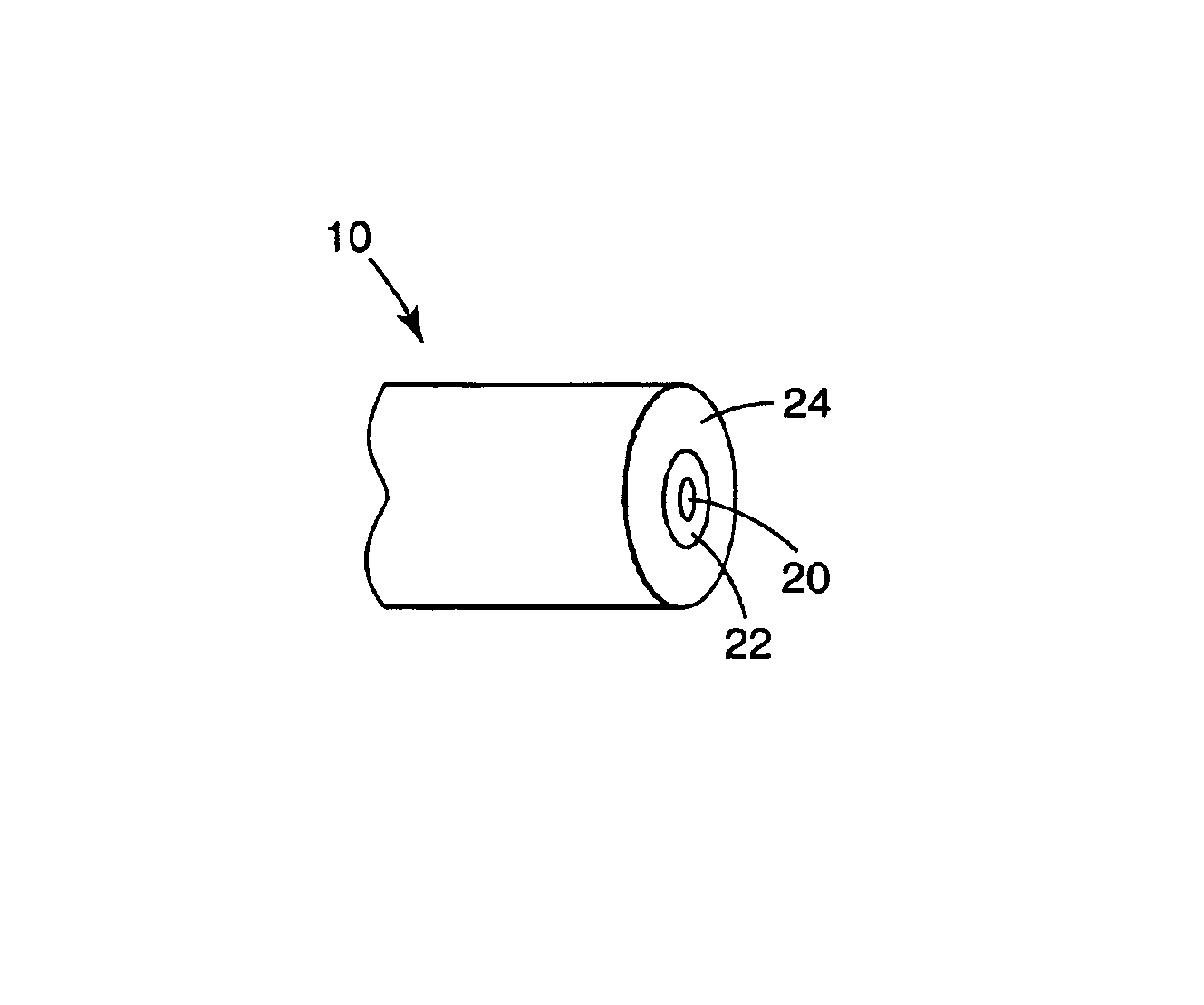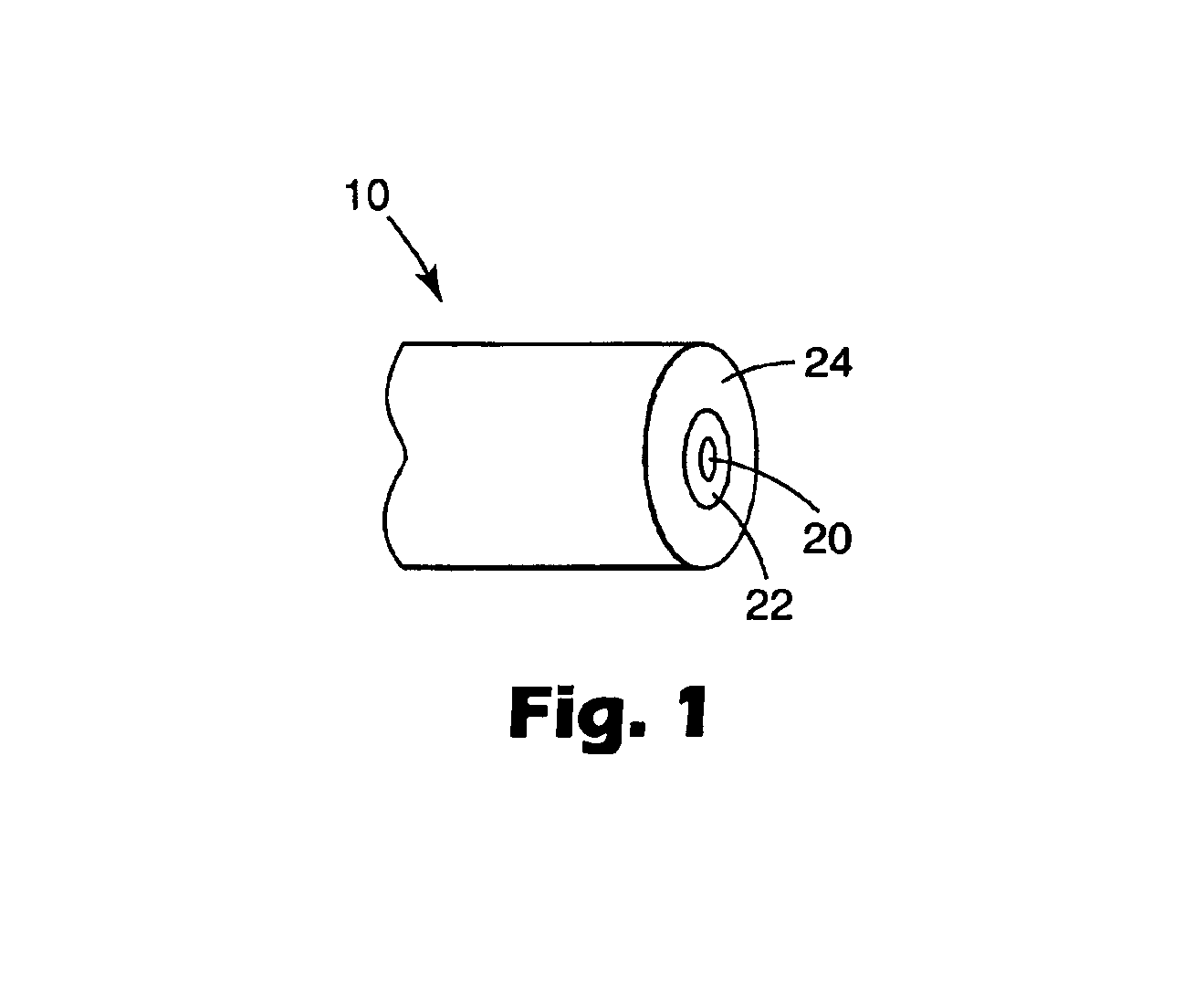Small diameter, high strength optical fiber
a technology of optical fibers and small diameters, applied in the field of silicon optical fibers, can solve the problems of reducing the mechanical strength of optical fibers, limited space to accommodate large diameter fibers, and common fiber damage, and achieves the effects of reducing the time needed, high strength, and high tolerance to bending stresses
- Summary
- Abstract
- Description
- Claims
- Application Information
AI Technical Summary
Benefits of technology
Problems solved by technology
Method used
Image
Examples
examples
[0057]Table 1 provides Comparative Examples of coated optical fiber prepared using a similar process to that used for optical fibers of Examples according to the present invention shown in Table 2. Both tables include information indicating diameters for silica clad optical fibers, thickness of coatings applied thereto, and the total diameters of coated optical fibers.
examples 1a-1c
[0061]Examples 1A-1C represent coated optical fibers, having a diameter of about 160 microns, prepared using separate runs of material under substantially the same draw tower conditions. The polymer (P-coat) coating used for Example 1A and Example 1B was an epoxy resin cured using a cationic photoinitiator having a hexafluoroantimonate anion. An iodonium methide photoinitiator was used to cure the polymer coating of Example 1C. In each case the P-coat was overcoated with an acrylated urethane coating identified as DSM 3471-2-136 (available from DSM Desotech, Elgin, Ill.) that cures by a radical polymerization mechanism. Dynamic fatigue (tensile to failure as in FOTP-28) of Examples 1A and 1B gave results showing reasonable consistency from about 49.2×103 kg / cm2 (700 kpsi) to about 52.7×103 kg / cm2 (750 kpsi). Example 1C gave consistent, improved performance close to 56.2×103 kg / cm2 (800 kpsi). Example 1C differs from the others only in the use of bis(dodecylphenyl) iodonium methide p...
examples 2a-2d
[0062]Examples 2A-2D represent coated optical fibers, having a diameter of about 130 microns, prepared using separate runs of material under substantially the same draw tower conditions. The polymer (P-coat) coating was an epoxy resin cured using a cationic photoinitiator having a methide anion. This was overcoated with an acrylated urethane coating that cures by a radical polymerization mechanism. Dynamic fatigue (tensile to failure as in FOTP-28) of multiple samples of Examples 2A-2D showed highest consistency and strength with results close to 56.2×103 kg / cm2 (800 kpsi).
PUM
| Property | Measurement | Unit |
|---|---|---|
| diameter | aaaaa | aaaaa |
| diameter | aaaaa | aaaaa |
| diameter | aaaaa | aaaaa |
Abstract
Description
Claims
Application Information
 Login to View More
Login to View More - R&D
- Intellectual Property
- Life Sciences
- Materials
- Tech Scout
- Unparalleled Data Quality
- Higher Quality Content
- 60% Fewer Hallucinations
Browse by: Latest US Patents, China's latest patents, Technical Efficacy Thesaurus, Application Domain, Technology Topic, Popular Technical Reports.
© 2025 PatSnap. All rights reserved.Legal|Privacy policy|Modern Slavery Act Transparency Statement|Sitemap|About US| Contact US: help@patsnap.com


